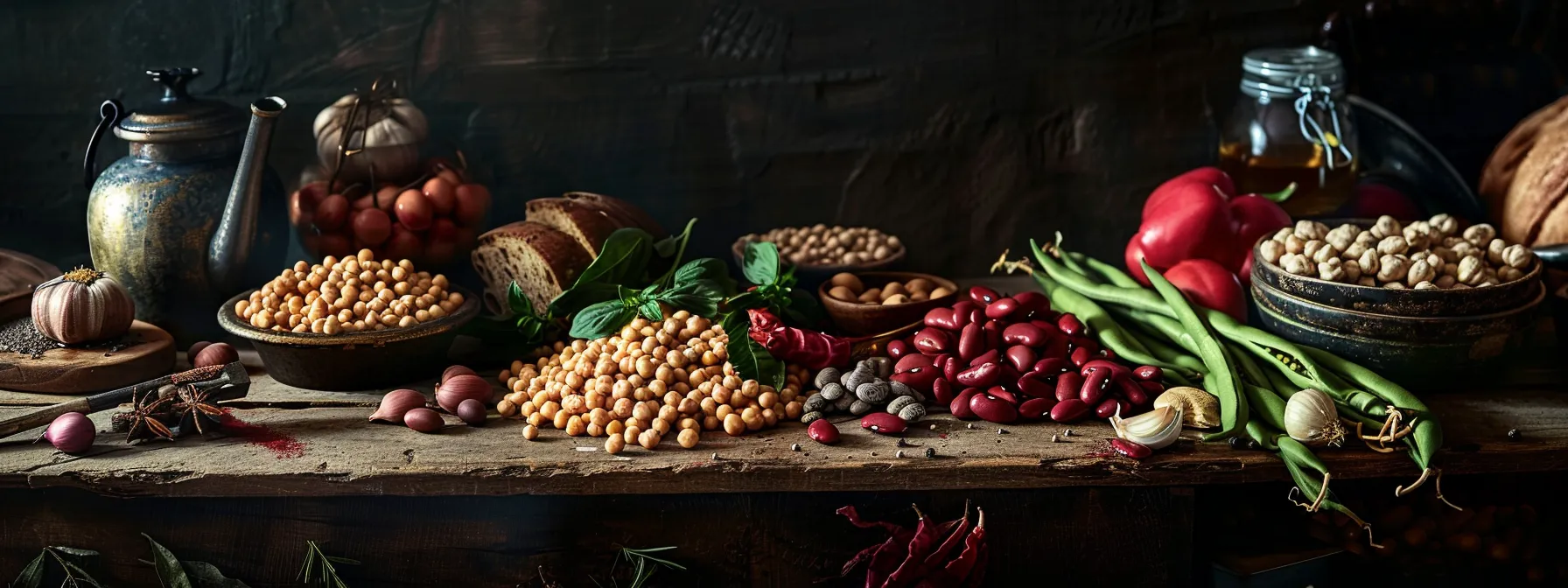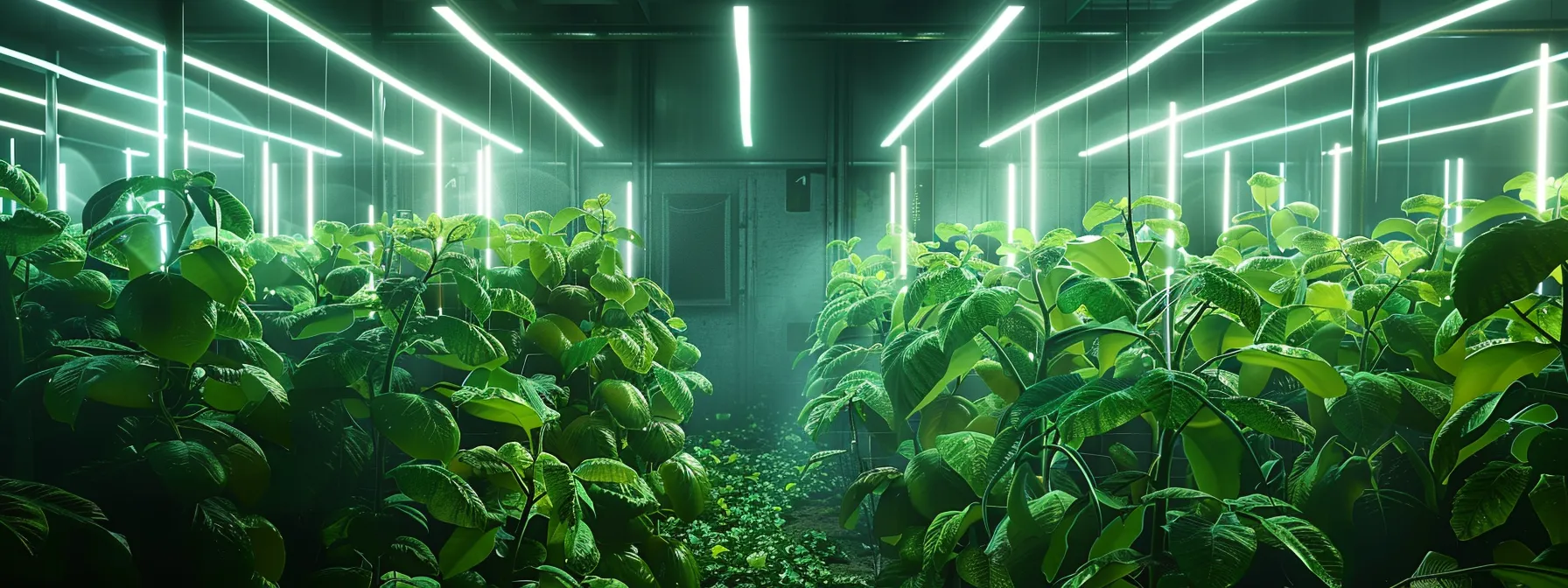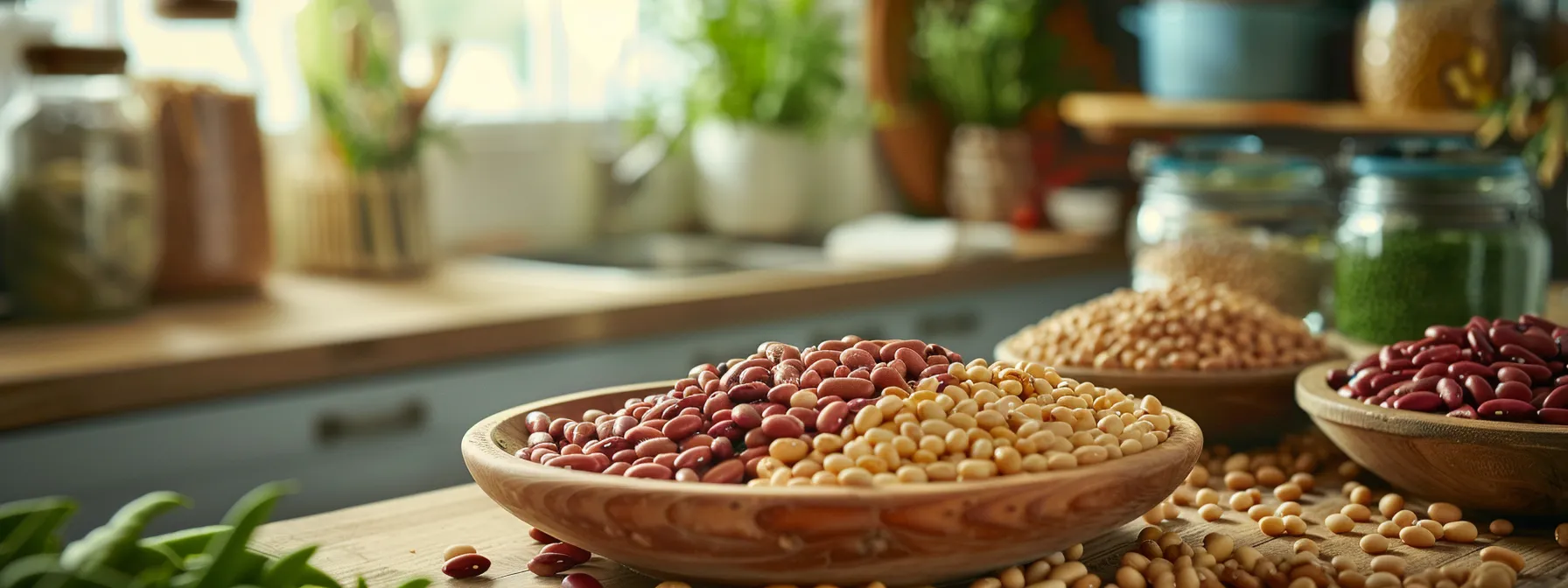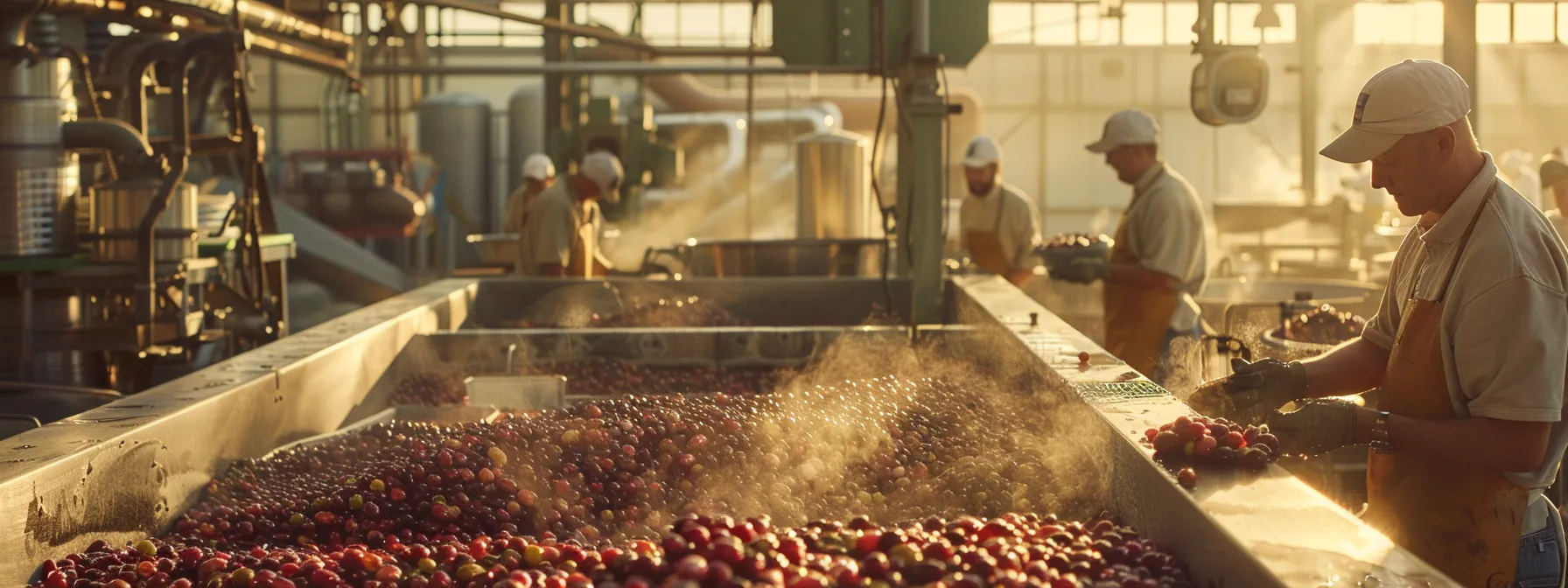What is Bean?
AI Overview:
This article explores the true nature of the bean—a small seed with a massive global impact. It unpacks the bean’s scientific definition, historical roots, and enduring importance in both nutrition and agriculture. Readers will discover how beans contribute to sustainable farming, support soil health, and provide a powerful source of plant-based protein for modern diets.
Beyond its role in food, the post connects the bean’s agricultural and cultural value—tracing its journey from ancient civilizations to today’s kitchens. It highlights key varieties such as pinto, navy, black turtle, lentil, and mung bean, explaining how each type enhances balanced meals and eco-conscious farming.
From its health benefits and potential allergens to its economic role in food production, the article provides a comprehensive understanding of how this humble seed continues to shape diets, communities, and sustainable food systems worldwide.

What Is a Bean? Understanding Its Definition and Significance
What is a bean? This post explains its true definition and role in everyday life. The article covers what beans are, their historical background, and their significance in nutrition and agriculture. Business owners looking to improve their office environment will find practical insights and useful data for informed decision-making. Readers facing confusion about bean varieties and their benefits will gain clear answers and simple guidance on using beans effectively.
Key Takeaways
- bean provides nutritional benefits with versatile culinary uses
- bean cultivation practices support sustainable agriculture and soil health
- beans offer a reliable plant-based protein alternative for meals
- cultural traditions emphasize bean’s role in balanced, nutritious dishes
Defining Bean and Its Characteristics

The bean is a type of seed that plays a crucial role as an ingredient in various dishes. It contains water and essential nutrients, making it a valuable food source.
This seed shows distinctive characteristics, often classified by its size and texture, with varieties such as lima bean and vicia faba holding significance in culinary applications:
The bean is recognized for its versatility and nutritional value, suitable for crafting a range of savory foods. It consistently contributes as a primary ingredient in both traditional and modern recipes.
The bean remains a popular choice in many kitchens, thanks to its practical cooking attributes and essential properties as a seed. Its steady use reflects the core role it plays in everyday meal preparation.
Historical Significance of Beans

The bean has a rich past that includes widespread use of ingredients such as chickpea and soybean across ancient cultures.
Archaeological evidence shows the cultivation of adzuki bean and kidney bean in various regions centuries ago:
The historical use of pea and soybean in ancient cookery reflects nutritional knowledge that spanned centuries.
Records indicate that beans played a central role in diet and trade, with adzuki bean and kidney bean frequently mentioned in early texts.
Varieties of Beans

This section discusses various bean types, focusing on common varieties and their features. It examines the nutritional value of different beans, including the vegetable green bean, and the phaseolus and phaseolus coccineus species. The content provides business owners with practical insights on how these plant-based ingredients support balanced diets and versatile meal options.
Common Types and Their Features
Business owners often seek variety in their dishes by incorporating a range of bean types, such as the pinto bean and navy bean. The selections within the fabaceae family contribute significant protein content, making them attractive for balanced meal plans and recipes explained in english language.
Industry experts note the diversity of beans with features that serve practical culinary needs and nutritional goals:
- Pinto bean offers a unique texture suitable for many preparations.
- Navy bean is known for its consistent protein delivery.
- The fabaceae variety underlines both versatility and ease of preparation.
Nutritional Value of Different Beans
The nutritional value of different beans is evident in their contribution to a balanced diet, offering protein and fiber much like fruit supports overall nutrition. Beans such as the black turtle bean and lentil provide essential minerals and antioxidants that help maintain weight and support healthy living.
Industry professionals note that beans complement various dishes and dietary plans by offering versatile options for meal planning and portion control:
- Black turtle bean lends robust flavor and protein-rich composition.
- Lentil supports diet plans with low-calorie yet high-nutrient properties.
- Other varieties contribute to weight management and overall nutritional balance.
Growing Beans

Bean cultivation requires ideal conditions and systematic practices. Professionals focus on soil quality, irrigation, and climate factors, including cloud gate effects, to ensure each bean—a noun representing versatility—delivers essential dietary fiber. Methods popular in the united kingdom and americas illustrate practical cultivation practices explored in the following sections.
Ideal Conditions for Cultivation
The cultivation of beans requires attention to soil health and climate stability, factors emphasized by the food and agriculture organization. Maintaining proper moisture and nutrient levels ensures that beans, such as mung bean, reach their full potential in producing a tender texture ideal for forming the base of various salad recipes and tofu dishes.
Farmers must carefully monitor local weather patterns and irrigation setups to meet the growing requirements of beans destined for use in soup and other culinary preparations. A controlled environment allows the essential nutrients in beans, including those needed for high-quality mung bean, to develop, thereby providing a reliable ingredient for balanced meal options.
Major Cultivation Practices
Major cultivation practices emphasize proper nutrient management and timely irrigation to support healthy bean growth. Techniques include intercropping with tomato plants to enhance soil fertility and deter pests, ensuring optimal conditions for phaseolus acutifolius and other bean varieties used in a health-conscious recipe setting.
Farm managers apply systematic crop rotation and controlled water usage to maintain soil balance and prevent nutrient depletion. Utilizing hands-on expertise in sustainable agriculture, they create conditions that favor robust bean development, ensuring that each phaseolus acutifolius specimen contributes valuable nutrient content for diverse recipe applications.
Culinary Applications of Beans

The article examines popular dishes featuring beans and bean-based products. It highlights recipes combining rice with beans, inventive carob infusions, diverse cuisine options influenced by vine growth, and the nutritional benefits of folate-enriched selections. The detailed content offers practical insight into these areas, presenting both culinary creativity and essential product knowledge.
Popular Dishes Featuring Beans
Beans play a fundamental role in various international dishes, serving as a reliable crop that meets the culinary needs of many businesses and households. This ingredient has a history spanning a millennium, with recipes often featuring beans described in the german language as a base ingredient that acts as both noun and verb to facilitate consistency and taste in meals.
Popular dishes featuring beans are prepared by chefs who rely on hands-on expertise to achieve a balanced flavor profile and a satisfying taste. The dish preparation techniques, refined over a millennium, demonstrate careful evaluation of how a crop like beans can serve both as a vibrant ingredient and a key verb representing effective culinary action.
Bean-Based Products
Bean-based products offer unique solutions in various culinary applications, serving as reliable ingredients in baking recipes that benefit from natural iron enrichment. Industry specialists note that these products can be integrated into recipes similar to vanilla-infused items popular in mexico, providing consistent flavor and nutritional value.
Innovative approaches to bean-derived products have led to modern offerings aligned with contemporary culinary demands, with examples featured during events at millennium park:
- Vanilla-infused bean desserts
- Iron-rich bean snacks
- Baking mixes incorporating beans
- Mexico-inspired bean culinary creations
Bean’s Role in Nutrition

This section outlines the nutritional benefits of beans, including lablab and baked beans, examined from a middle english perspective. It also highlights nutrition and potential allergen issues, such as reactions to onion, providing a concise overview that leads into detailed insights on health benefits and toxicity concerns.
Health Benefits Associated With Beans
Beans provide essential nutrients that support overall health, with a notable presence of magnesium that benefits muscle and nerve function. Their nutrient profile offers a balanced alternative to animal-based proteins, allowing businesses and households to reduce reliance on other sources such as butter and oil while still meeting nutritional needs.
Industry experts note that beans complement diets by providing a plant-based option that mirrors the benefits of products like cocoa bean, integrating natural sources of magnesium. This approach aids in promoting heart health and bloodstream benefits, making beans a reliable ingredient for balanced meal preparation.
Potential Allergens and Toxicity
Potential allergens in beans may cause adverse reactions, and certain individuals could experience symptoms that mimic a mild disease despite the nutritional benefits of rice and beans. Experts note that the genus of beans covers a wide spectrum of species, as detailed in an encyclopedia of agricultural knowledge from france:
Studies indicate that some individuals may develop specific allergies linked to proteins found in beans, which could cause toxicity in sensitive cases. Health professionals in france advise careful dietary inclusion, recommending alternative protein sources when rice and beans pose a risk of disease complications, as supported by practical examples in an extensive encyclopedia of food science.
Beans in Agriculture and Economy

Farmers integrate beans into agriculture practices, recognizing their role in sustainable food production and soil improvement. This approach supports diverse crops, including the cranberry bean, which offers beneficial vitamin content.
Businesses process beans by boiling them to create nutritious dishes that contribute to balanced diets. These simple methods keep nutrient retention high and support efficient production in agriculture.
Industry leaders convert beans into flour to diversify product offerings. This adaptation provides valuable dietary options while maintaining the essential vitamin profile of traditional ingredients.
Providers support local agriculture by promoting the use of varied bean types such as the cranberry bean. They ensure that processing methods like boil and flour formulation deliver consistent health benefits across the supply chain.
Cultural Importance of Beans

Cultural traditions recognize the bean as a staple food, fundamental in daily meals that provide essential carbohydrate content. Business owners and culinary experts often mention its role in forming the base of a nutritious bean salad.
Historical accounts refer to figures like richard curtis, who recognized the natural charm of beans in creating unique recipes. Such accounts highlight the bean’s importance in adding a subtle spice and texture to dishes.
The bean appears in cultural narratives as a reliable ingredient that enriches diets with carbohydrate benefits. Its use in various bean salad recipes underscores its status as a staple food in everyday cooking.
Community gatherings frequently celebrate the bean, where its delicate flavor pairs well with a measured spice. Culinary professionals admire its versatility, using it in both simple meals and intricate bean salad variations.
Frequently Asked Questions
What defines a bean and its key features?
A bean serves as a reusable software component encapsulated by accessible properties, defined methods, and managed events, offering modularity and flexibility within applications.
How have beans shaped historical agriculture?
Historical agriculture benefited from beans; their natural ability to fix nitrogen improved soil fertility, supplied essential nutrients, and enhanced crop rotation, laying groundwork for sustainable farming practices.
What varieties of beans are available?
1800 Office Solutions focuses on leasing and repairing office equipment for businesses. Their expertise does not cover food products; thus, information on bean varieties is outside their specialty.
What methods support effective bean cultivation?
Effective bean cultivation requires well-draining soil, balanced nutrients, proper spacing, and timely irrigation. Crop rotation, natural pest control measures, and regular monitoring support robust growth and sustained soil health for long-term success.
How do beans contribute to balanced nutrition?
Beans supply valuable protein, fiber, and essential micronutrients. They support healthy digestion and weight management, contributing to balanced nutrition and sustained energy levels for busy professionals.
Conclusion
This summary highlights the role of the bean as an essential seed marked by its versatile texture and inherent nutritional value. It outlines how unique bean varieties support balanced diets and serve as a trusted ingredient across diverse culinary practices. It emphasizes that well-structured cultivation practices secure quality and consistent performance in kitchen applications. It reinforces the impact of bean usage in boosting overall dietary benefits and supporting sustainable agriculture.











